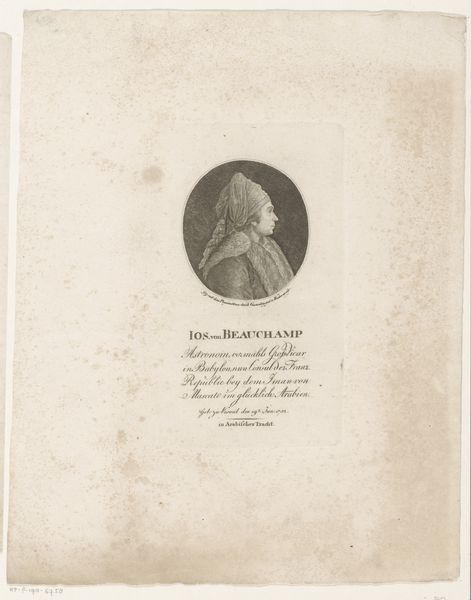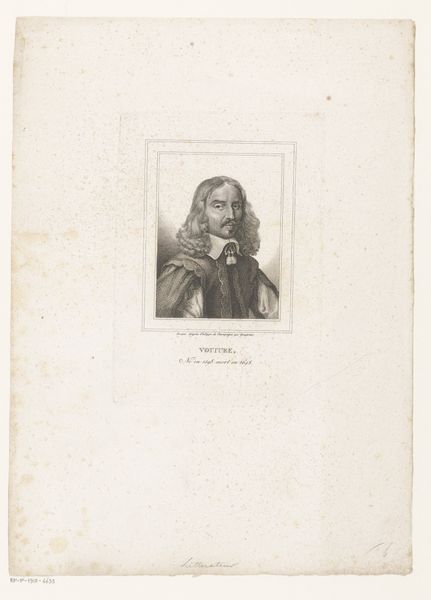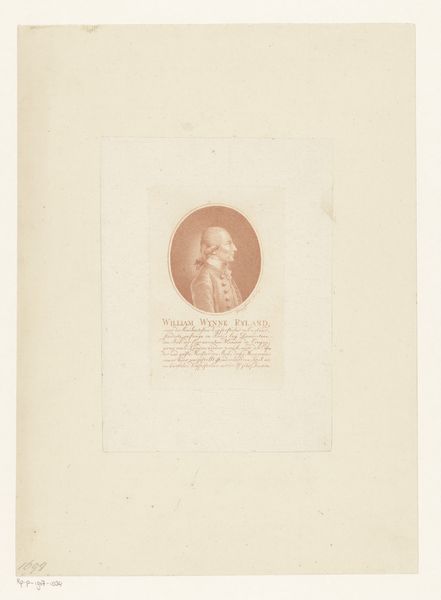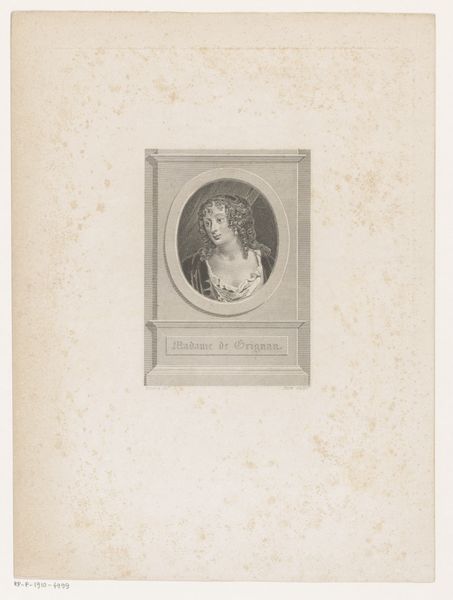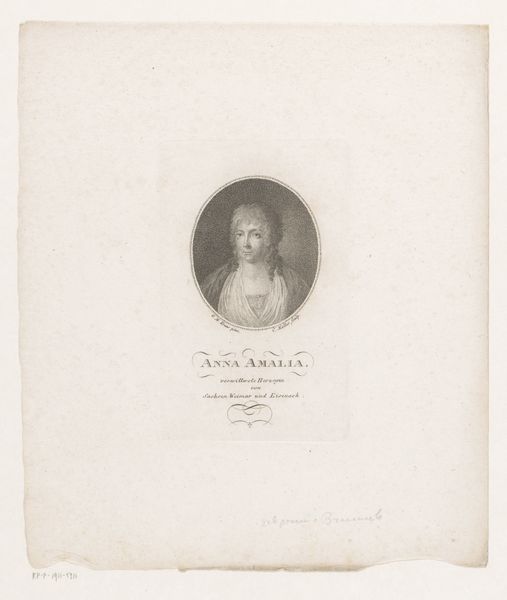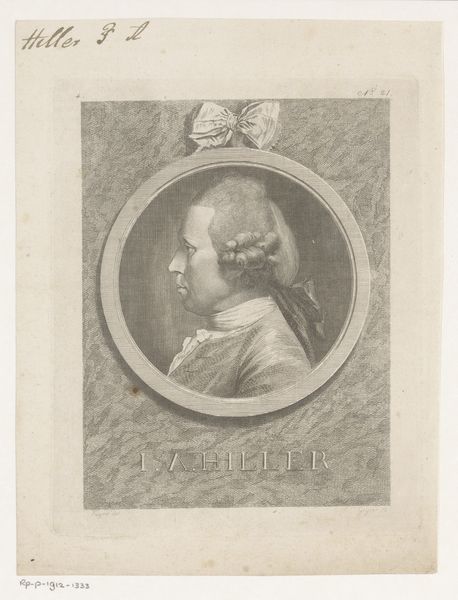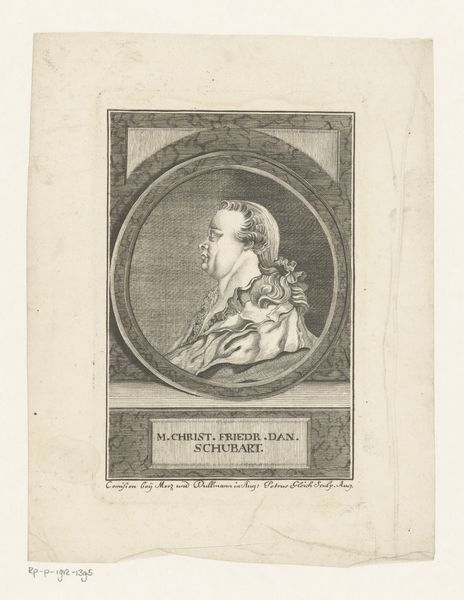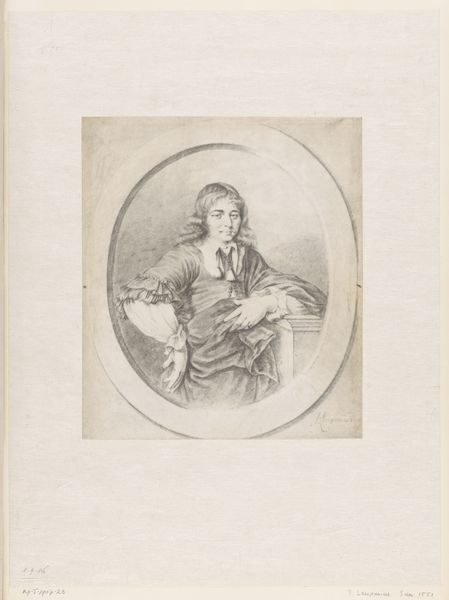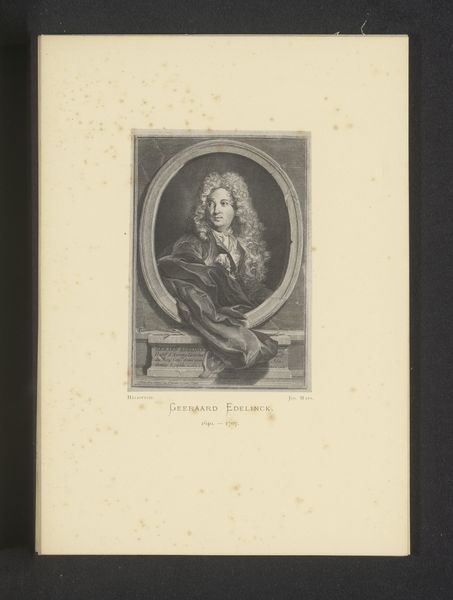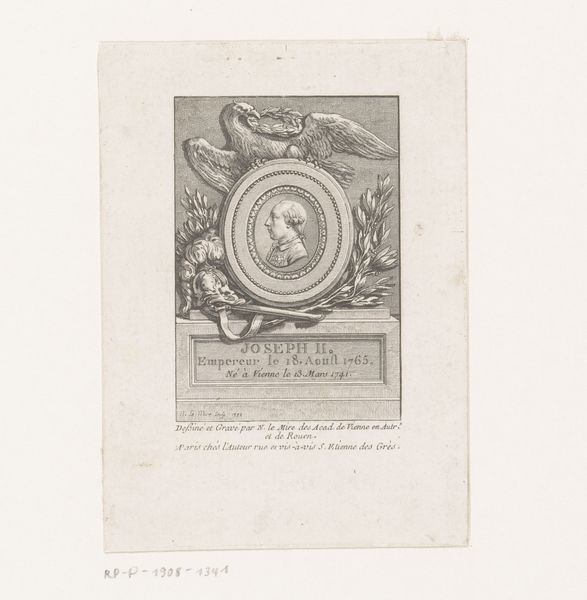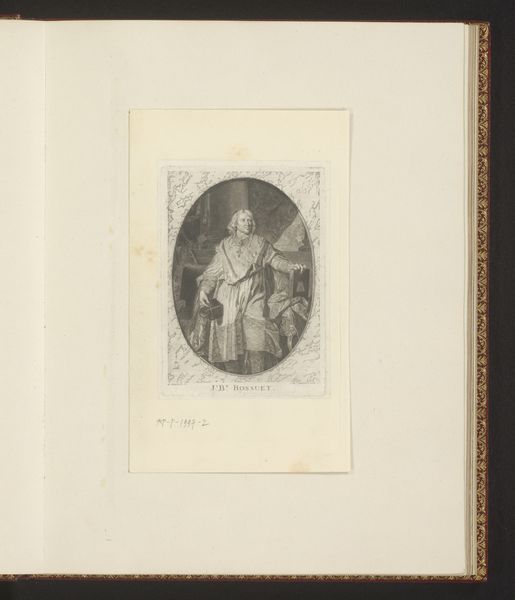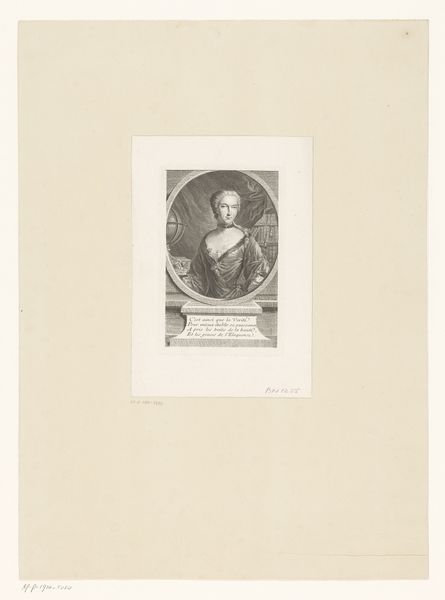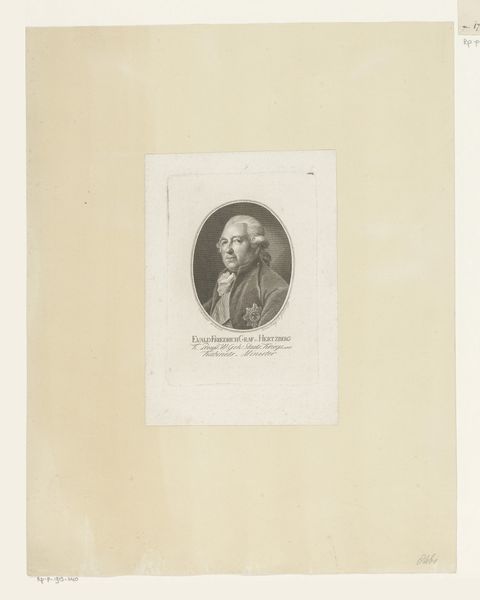
Dimensions: height 218 mm, width 149 mm
Copyright: Rijks Museum: Open Domain
Editor: Here we have a print from between 1850 and 1890, Jean Thédore Joseph Linnig's "Portrait of Louise Marie, Queen of Belgium", rendered as an engraving. The first thing I notice is the striking balance of the composition. What draws your eye, and how would you interpret it? Curator: The intrinsic structural elements guide my reading. The artist meticulously organizes visual planes, notice the tight symmetry anchored on the central oval frame. It immediately conveys a sense of formality. The contrasting values, alternating light and shadow, orchestrate the gaze towards the subject. Observe how the lines, predominantly curvilinear, soften the image despite its rigid form. Doesn't that delicate contrast intrigue you? Editor: Absolutely, the softness is definitely there! Is there a particular purpose you see to it? Curator: Certainly. The curvature could symbolize the Romantic artistic movement. Also, the remaining negative space surrounding the portrait adds to a contemplative atmosphere. By reducing competing visual components, the author amplifies the formal impact of the print, creating an introspective lens through which the subject should be examined. The artist’s use of negative space makes the portrait seem suspended, timeless. Editor: That’s fascinating! Focusing on form reveals so much more than just the surface of the subject. I now see beyond the historical aspect and appreciate its compositional intent. Curator: Exactly! Considering the structural elements heightens the visual depth and enriches our engagement with art.
Comments
No comments
Be the first to comment and join the conversation on the ultimate creative platform.
